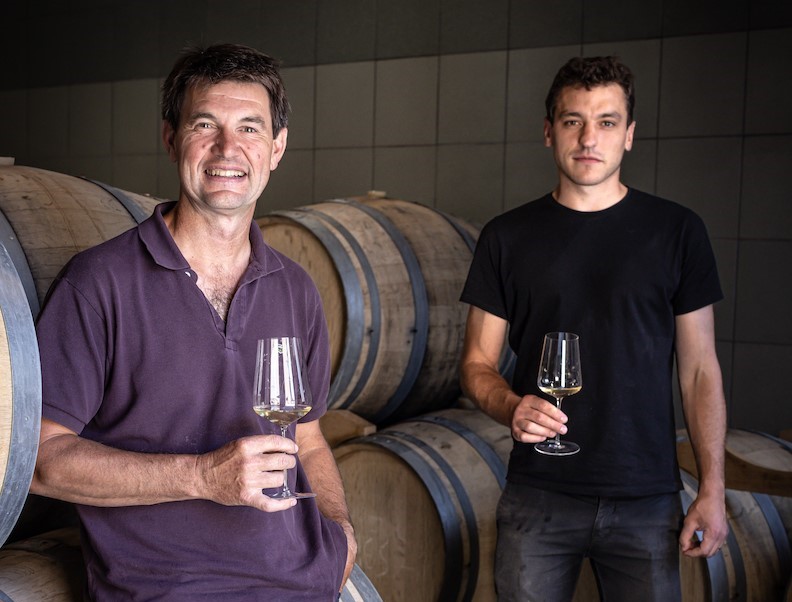Wine List
Nocturne: NV Unisson Blanc de Blancs Brut, NV Rosé Brut
Grand Tasting : NV Unisson Blanc de Blancs Brut, 2018 Pur Avize Blanc de Blancs Extra Brut, 2017 Les Belles Voyes Blanc de Blancs Brut, NV Rosé Brut
Gala Dinner : 2006 Les Belles Voyes Blanc de Blancs Brut Double Magnum
While the Bonvilles have been winegrowers since the 18th century, this estate traces its direct origins back to 1926, when Franck Bonville, who was working in the cellars of Veuve Clicquot, took possession of some parcels of vineyards in Avize. It wasn’t until 1959 that he started to sell wine under his own label, although he had purchased some cellars in 1936, the same ones that the family still uses today. Franck built the estate up to about 12 hectares; his son Gilles, who took over the estate in 1970, completely renovated the winery and expanded the estate to its current size of 15 hectares, mostly in the grand cru villages of Avize and Oger, but also including a few parcels in Cramant and Le Mesnil-sur-Oger. Since 1996 the estate has been in the hands of Gilles’s son Olivier, supported today by his son in law Ferdinand.
A majority of Bonville’s wine undergo primary fermentation and malolactic in termperature controlled stainless steel tanks.“Our goal is to get grapes as healthy as possible, to respect the work in the vines and to express the terroir of Avize and Oger,” says Olivier Bonville. “The freshness, minerality, finesse and structure of chardonnay are all expressed best in stainless steel.” Except for the Cuvée Les Belles Voyes, which sees additional élevage in 225-liter barriques, all of the wines are blended and bottled in late spring, and all are blends of the various grand cru villages—there is no vinification parcellaire here. “In the end, our selection is a function of maturity,” says Bonville, “not a function of terroir.“
Bonville keeps large stocks of reserve wine that play a key role in the estate’s style. A part of the reserve wine is also aged in futs, demi muids and foudre to be incorporated in the blends. “Reserve wines have a sort of primordial importance for us” he says. “We keep a lot of wine in reserve, and it allows us to have a lot of flexibility.” All of the cuvées employ reserves to some degree, apart from the millésime, and the non-vintage blanc de blancs can contain as much as 60 percent reserve wine, an unusually high proportion in Champagne.


